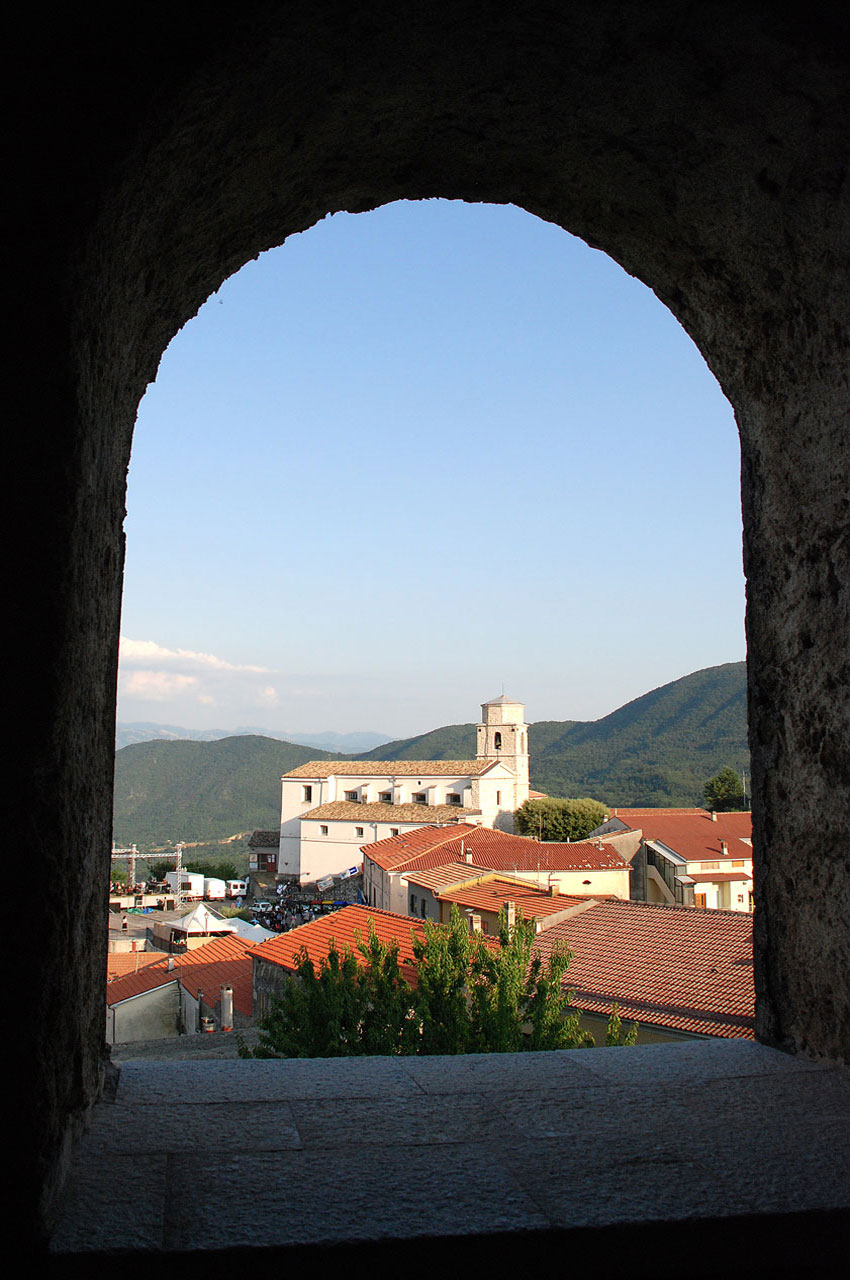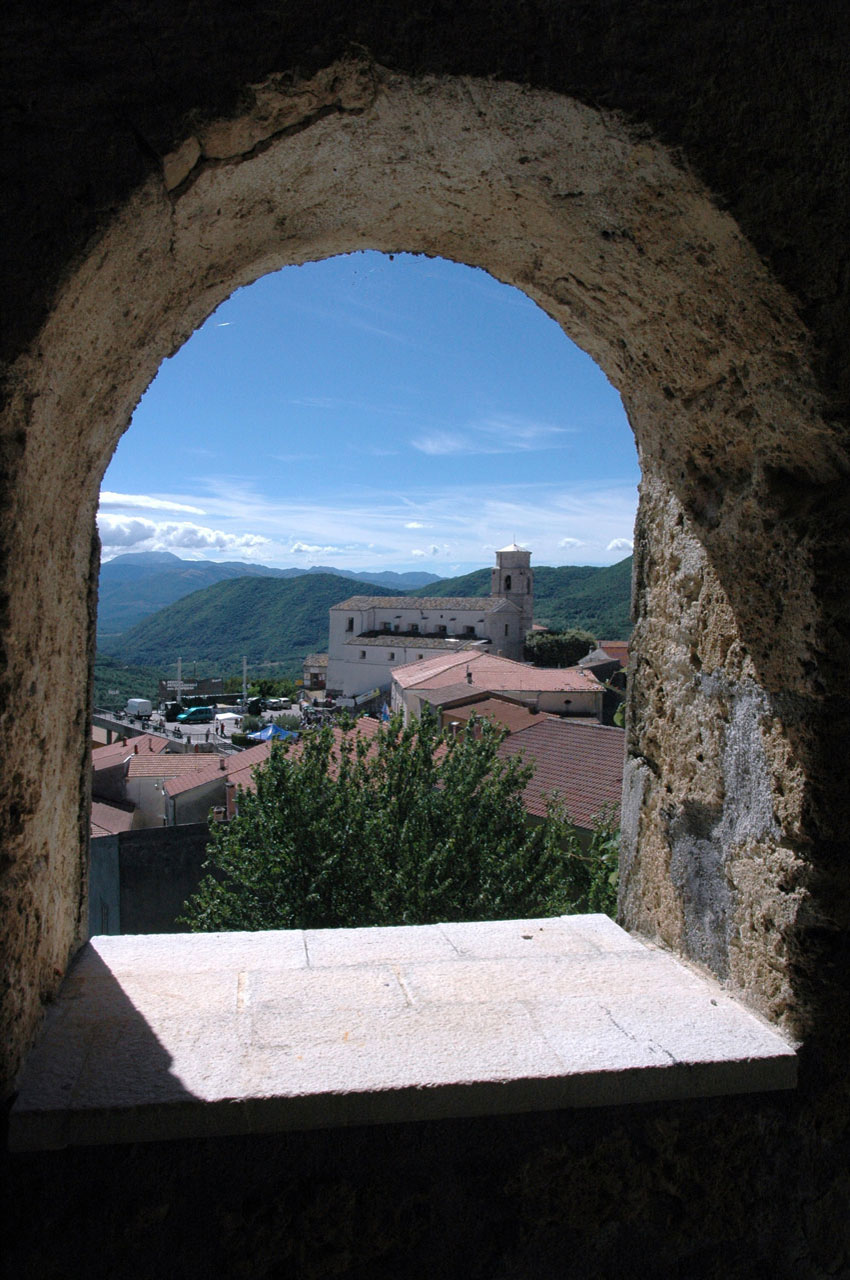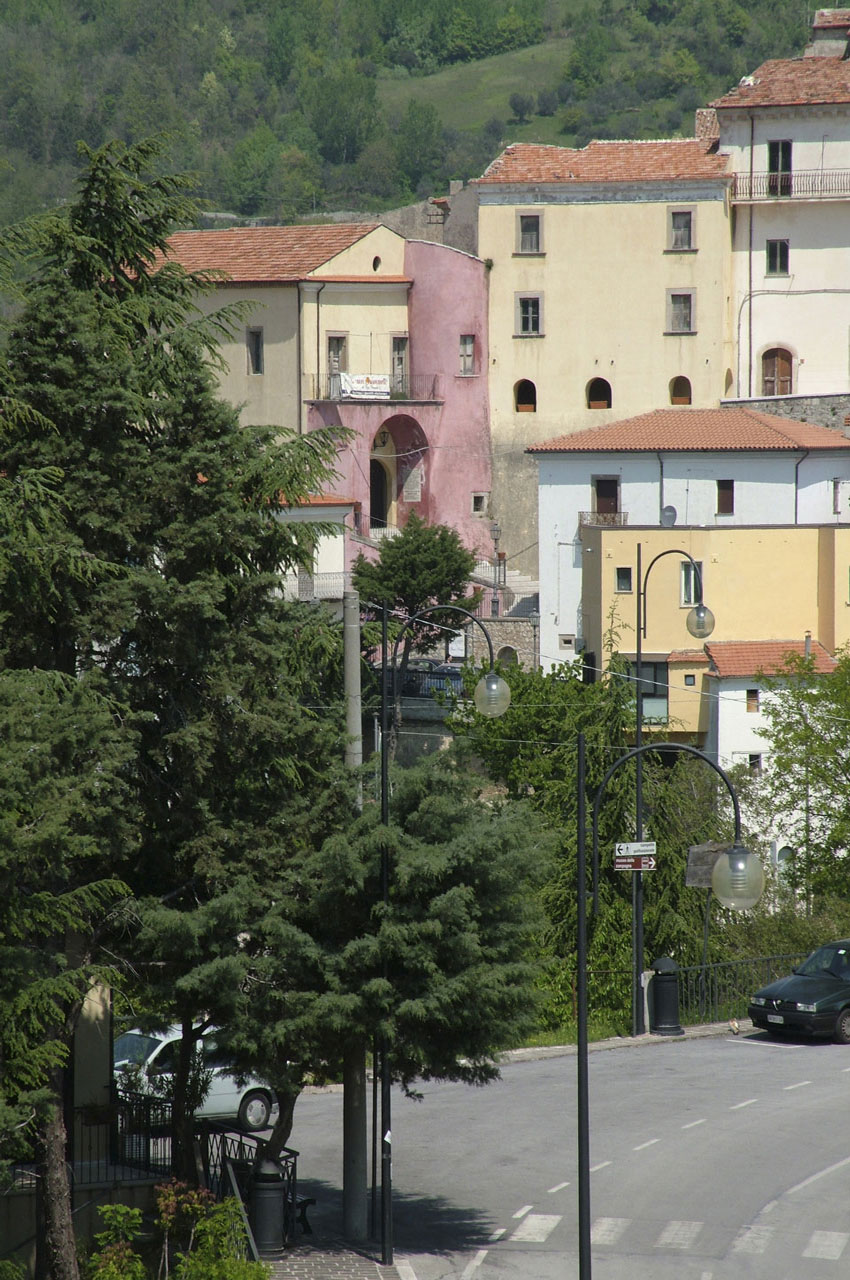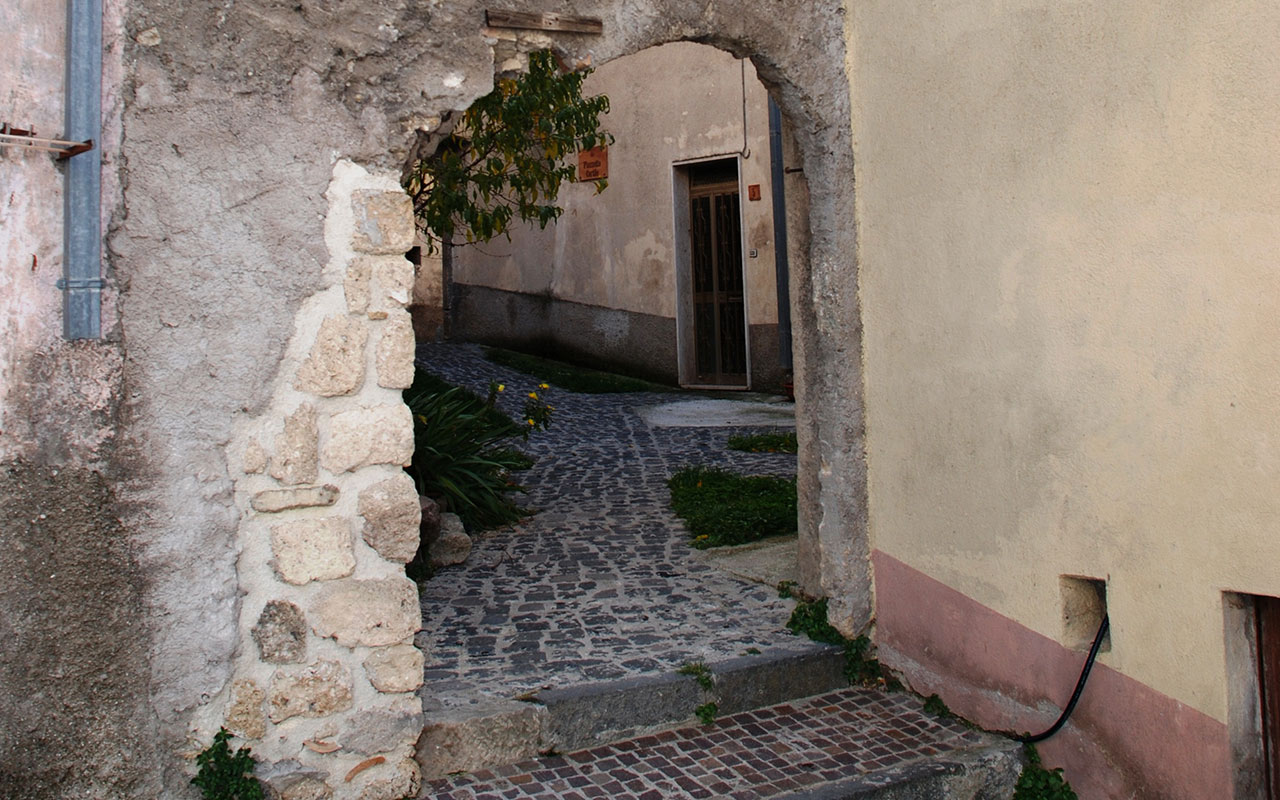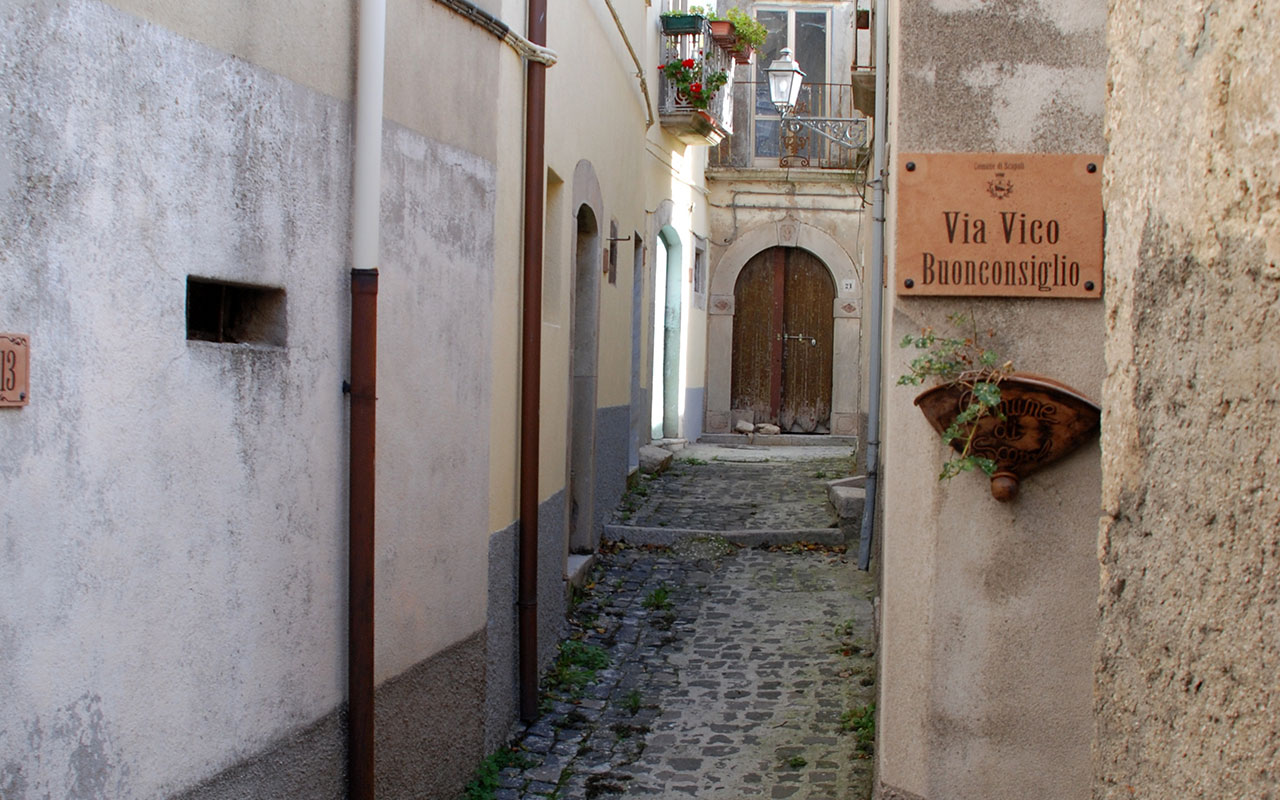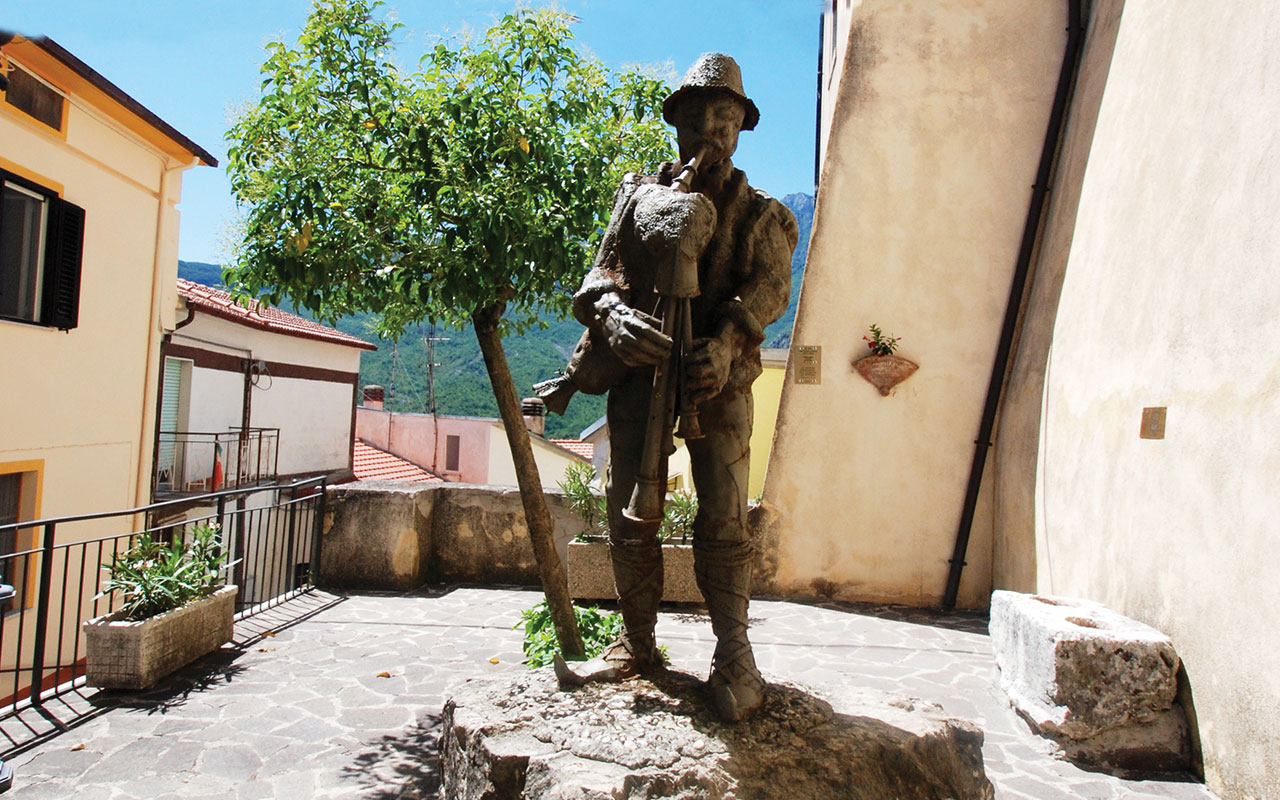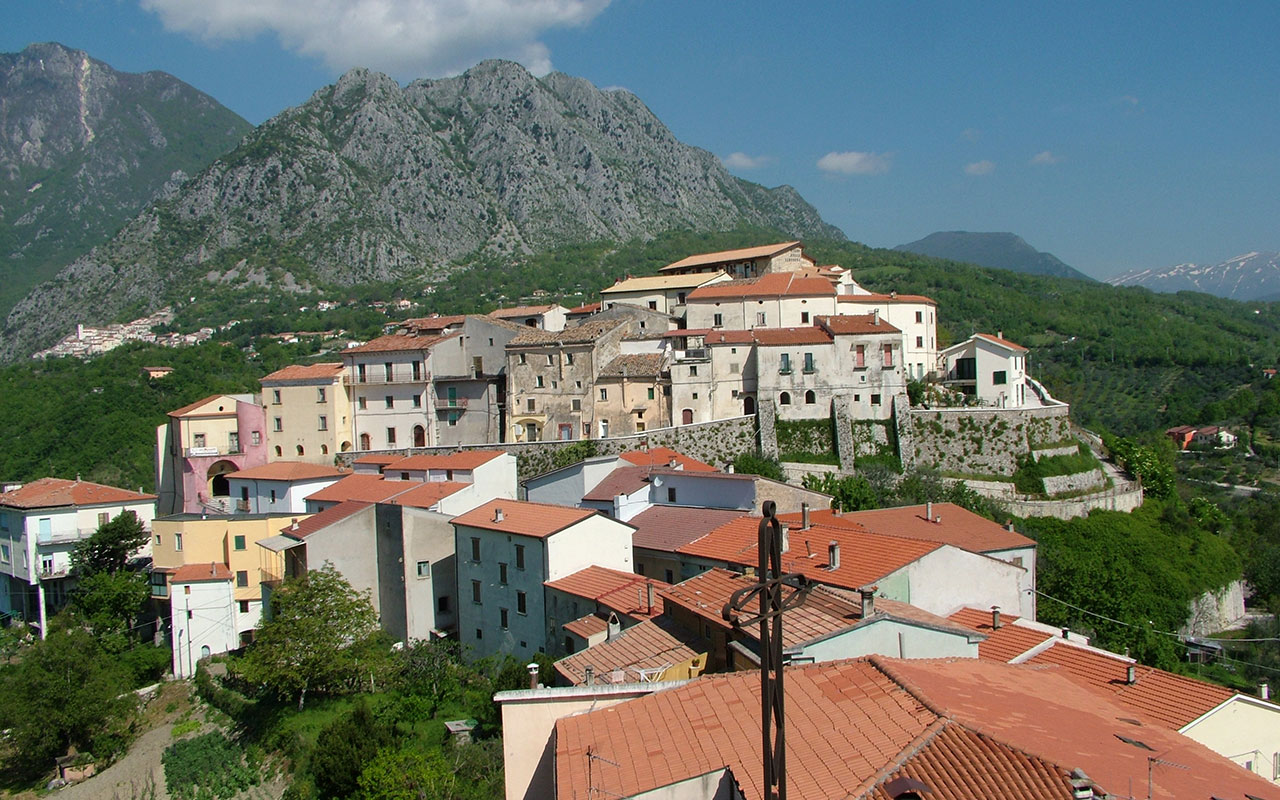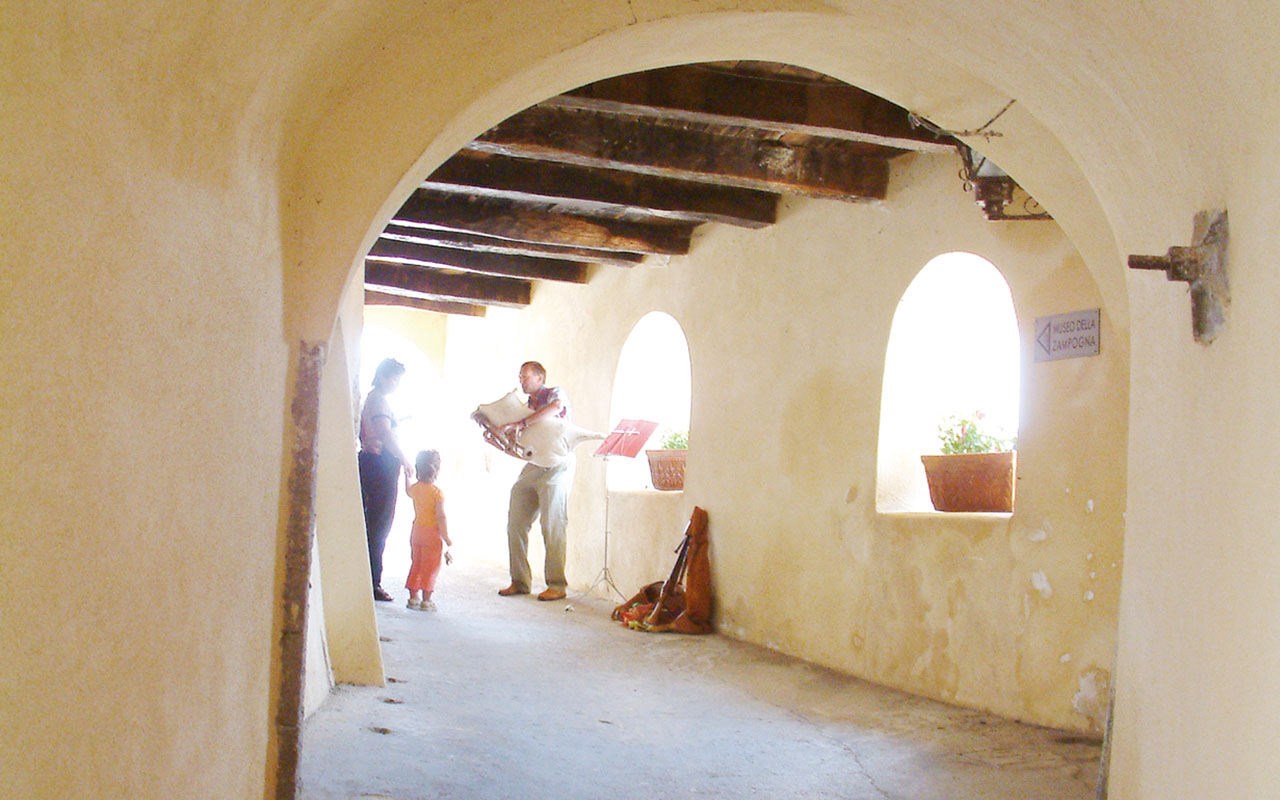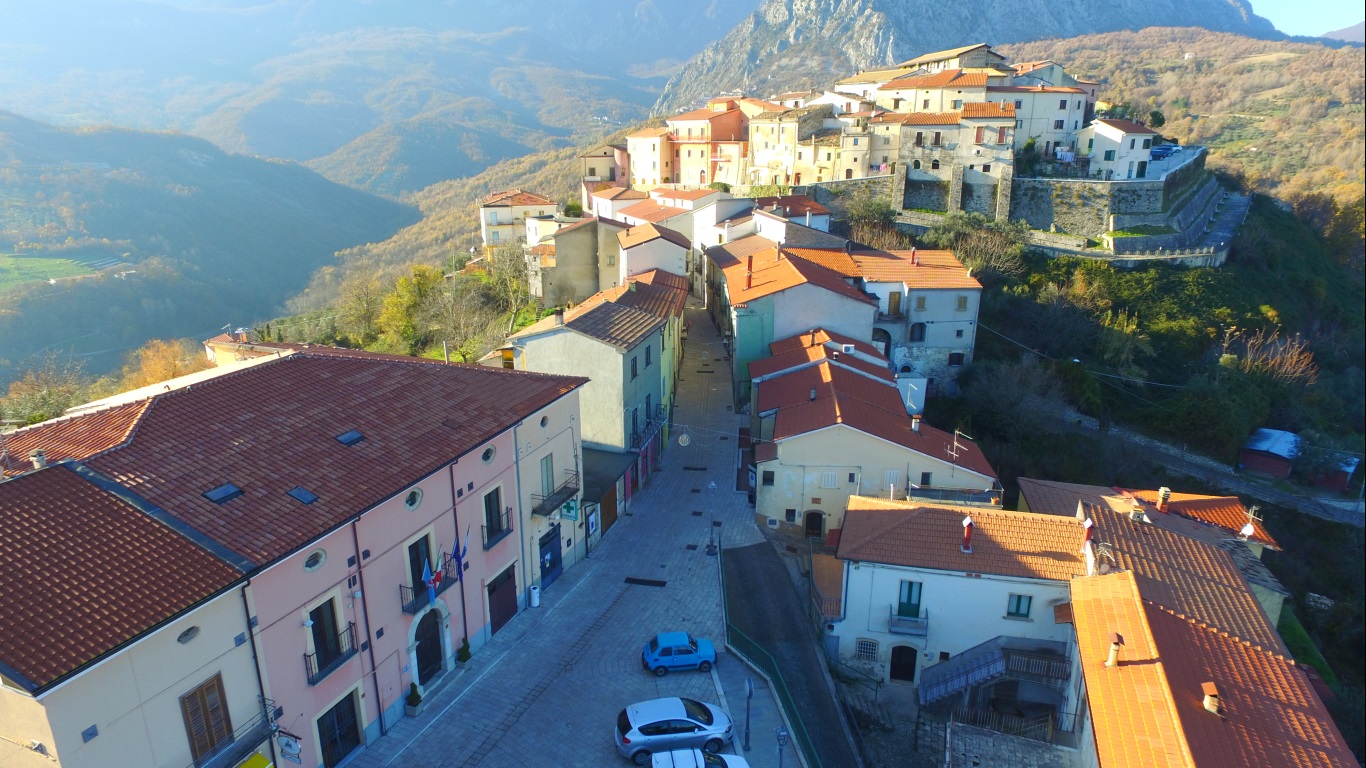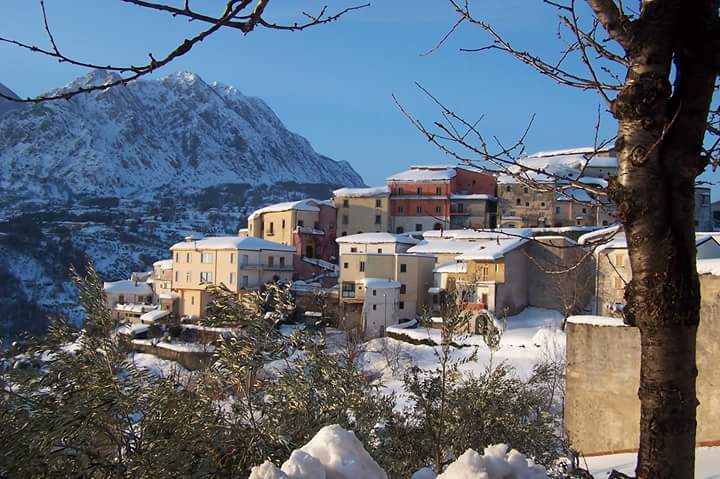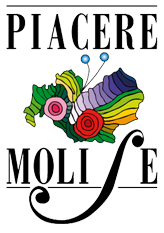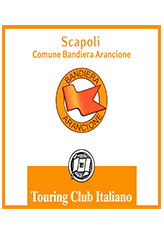Itinerary
The ancient nucleus of the Medieval village, located on a hill, is still present today in its original layout, which is characterized by the superb presence of the Palace of the Battiloro marquis. The construction displays ramparts overlooking the outcropping rocks that made up the base of the castle of Scapoli, later transformed into a residential dwelling. Another urbanistic element of particular interest is the parapet walk which can be reached through the entrance in from of the main entryway of the Palace, called the “Sporto”.
Leaving the parapet walk and turning left on a modern flight of steps, one ends up alongside Palazzo Mancini, the premises of the International Bagpipe Museum “P. Vecchione”, whose entry is located on vicolo S. Maria where, originally, the homonymous church stood. Going back down, Palazzo Caccia, the seat of the Museum of the Italian Liberation Corps “A. Moro”, is found, and in the square below the Monument to the Bagpipe Player can be admired, realized in 1980 by the sculptor Vittorio Piotti and set upon a pedestal of autochthonous rock. At the foot of the Battiloro castle there is the extra moenia Church of Saint John.
The ancient nucleus of the Medieval village, located on a hill, is still present today in its original layout, which is characterized by the superb presence of the Palace of the Battiloro marquis. The construction displays ramparts overlooking the outcropping rocks that made up the base of the castle of Scapoli, later transformed into a residential dwelling. Another urbanistic element of particular interest is the parapet walk which can be reached through the entrance in from of the main entryway of the Palace, called the “Sporto”.
Leaving the parapet walk and turning left on a modern flight of steps, one ends up alongside Palazzo Mancini, the premises of the International Bagpipe Museum “P. Vecchione”, whose entry is located on vicolo S. Maria where, originally, the homonymous church stood. Going back down, Palazzo Caccia, the seat of the Museum of the Italian Liberation Corps “A. Moro”, is found, and in the square below the Monument to the Bagpipe Play er (10) can be admired, realized in 1980 by the sculptor Vittorio Piotti and set upon a pedestal of autochthonous rock. At the foot of the Battiloro castle there is the extra moenia Church of Saint John.

